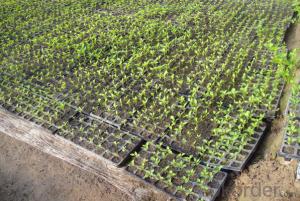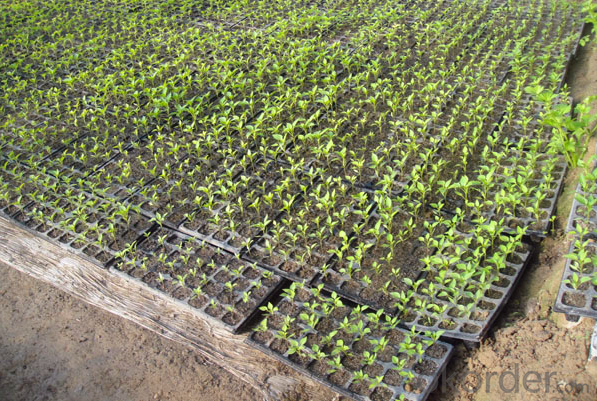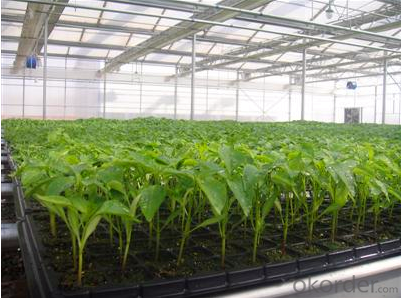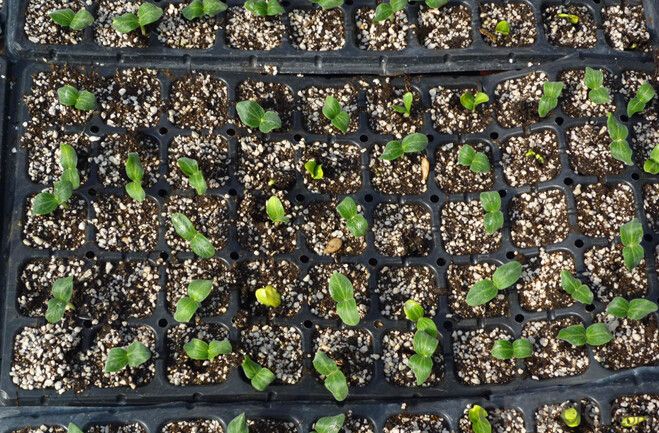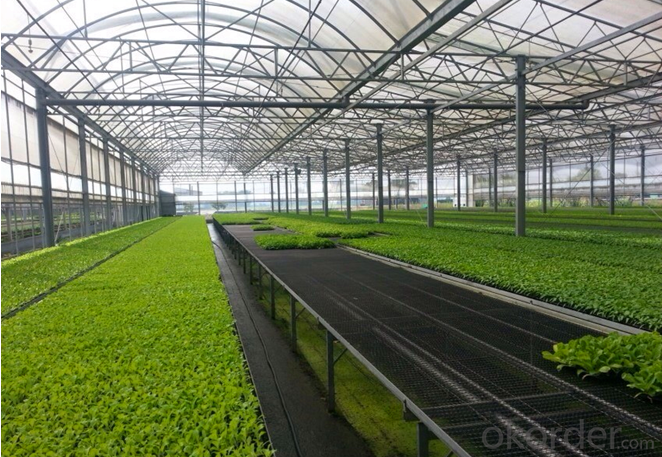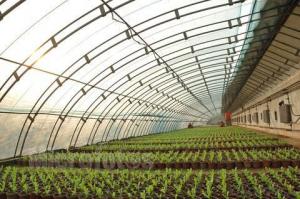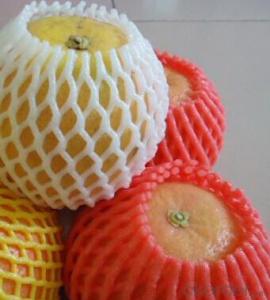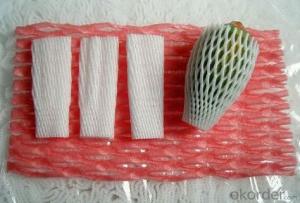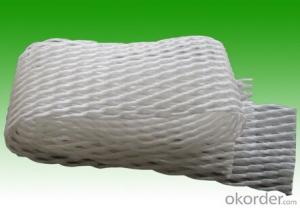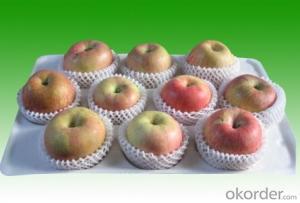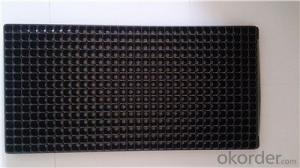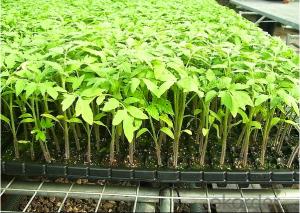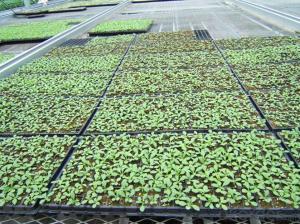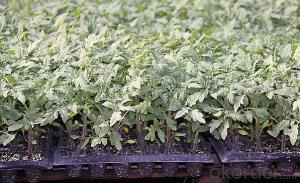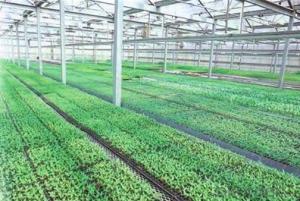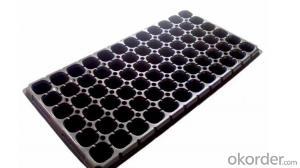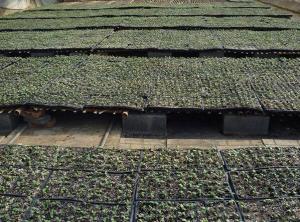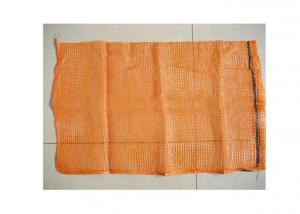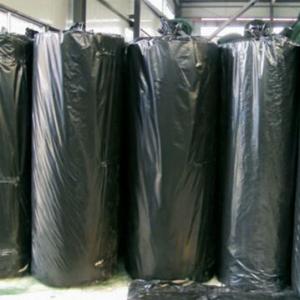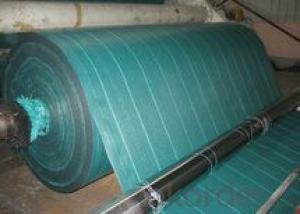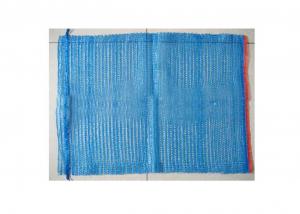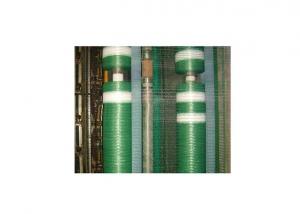Greenhouse Usage Plug Trays (Growing and Seedling) HIPS Made Plastic Seed Tray
- Loading Port:
- China main port
- Payment Terms:
- TT OR LC
- Min Order Qty:
- 3000 pc
- Supply Capability:
- 50000 pc/month
OKorder Service Pledge
OKorder Financial Service
You Might Also Like
Brief Introduction to CNBM:
CNBM International Corporation (CNBM International) is the most important trading platform of CNBM Group Corporation, a state-owned company under the direct supervision of State-owned Assets Supervision and Administration Commission of the State Council.
CNBM International is highly recognized by its business partners and clients all over the world and has obtained rapid development under the spirit of win-win. We will carry on the mutual beneficial, innovative and revolutionary trading structure as we did before, create value for our employees, share holders and clients and benefit the whole society in our future development.
Features of Plug Trays (Growing and Seedling) HIPS Made Plastic Plug Tray for Greenhouse:
· Material: HIPS
· Thickness: 0.5mm-1.5mm, Standard:1mm
· Weight: 80g(±5)g-230g(±5)g, Standard weight:155g(±5)g
· Size: length:490mm-540mm, width:190mm-345mm,depth:25mm-150mm
· Standard:540mmX280mm
· Cell count: 18-512
· Package: In Carton
· Warrenty: 8-10 times
Picture:
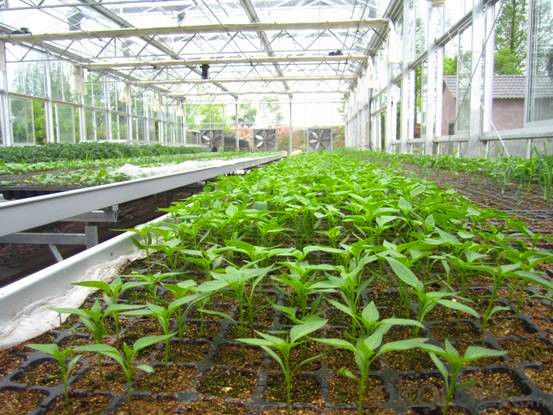
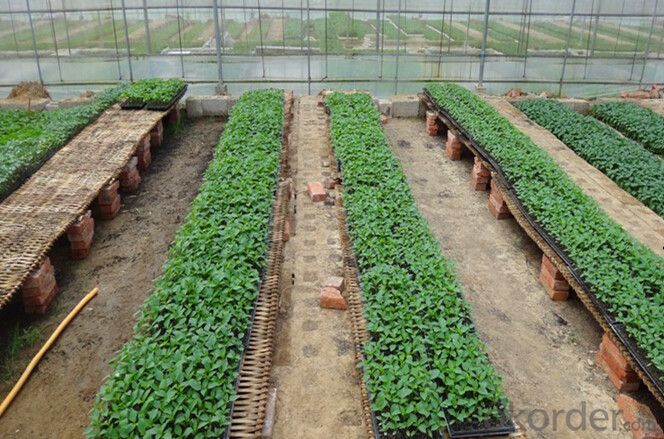
Specification of Plug Trays (Growing and Seedling) HIPS Made Plastic Plug Tray for Greenhouse:
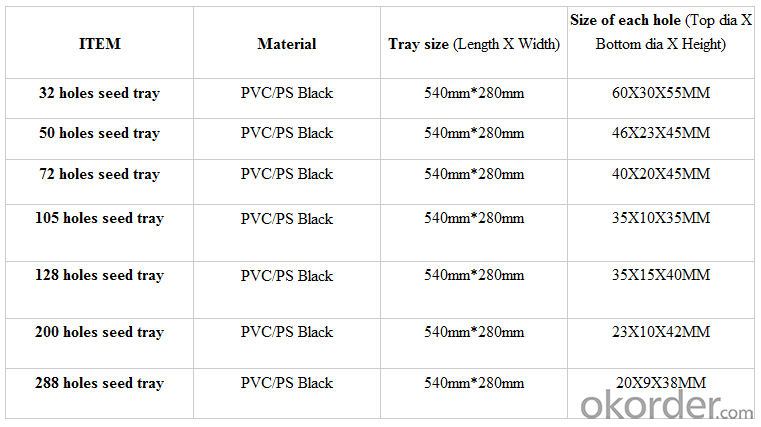
FAQ of Plug Trays (Growing and Seedling) HIPS Made Plastic Plug Tray for Greenhouse:
Q:1.How many times can the seed tray be used?
A: Under the same environment, it is decided by the thickness. Usually 0.6mm thickness can be used for 1 or 2 times.
1.0 thickness can be used for 3-4 times. 1.5 thickness can be used for 8-10 times.
Q: 2.How long is the production time?
A: Usually one to two weeks.
Q: 3.How is the seed tray being packaged?
A: They can be packaged in carton or pallets. Carton size is 1375px*725px*1250px.
- Q: How does ground cover affect the growth of nearby groundcovers?
- Ground cover can have both positive and negative effects on the growth of nearby groundcovers. On one hand, it can provide shade and reduce competition for resources, thus promoting the growth of neighboring groundcovers. On the other hand, some ground covers may release chemicals that inhibit the growth of other plants, leading to a negative impact. Overall, the influence of ground cover on nearby groundcovers largely depends on the specific species and their interactions.
- Q: Are agricultural plastic products safe for aquatic plants?
- Agricultural plastic products, such as mulch films and irrigation tubing, are generally considered safe for aquatic plants when used properly. These products are designed to be non-toxic and pose minimal risk to the aquatic environment. However, it is important to ensure that the plastic is properly disposed of after use to prevent any potential harm to aquatic plants or other organisms.
- Q: How many cells are typically in a nursery tray?
- The number of cells in a nursery tray can vary, but typically there are about 50 to 72 cells in a standard nursery tray.
- Q: What is rapid sorting?
- Paper plastic composite film, paper plastic composite film on recycling before the first paper separation, this is a method of paper plastic composite separation, separation equipment for electric heating with a chrome plated hollow barrel, the barrel is equipped with a hollow cylinder with a blade, the cylinder and the hollow cylinder to rotate in the opposite direction, a mixture of paper and plastic after the break of the adding barrel in the barrel by heating a mixture of the plastic melt in the barrel at the lower part of the discharge, the air in the hollow cylinder exhaust.
- Q: Can agricultural plastic products be used for aquaculture?
- Yes, agricultural plastic products can be used for aquaculture. They can be utilized for various purposes such as constructing fish tanks, lining ponds, creating floating platforms, or making fish cages. The durable and water-resistant nature of agricultural plastic makes it suitable for aquaculture applications, helping to improve efficiency and productivity in fish farming operations.
- Q: What are some ground cover options for slopes or hillsides?
- Some ground cover options for slopes or hillsides include creeping juniper, creeping phlox, sedum, vinca minor, and pachysandra. These plants are low-growing and spread quickly, providing erosion control and adding visual interest to the landscape.
- Q: Can ground cover plants be used to create a natural weed barrier?
- Yes, ground cover plants can be used to create a natural weed barrier. Ground cover plants, with their dense growth habits and spreading ability, can effectively suppress weed growth by shading out the soil, making it difficult for weed seeds to germinate and establish. Additionally, many ground cover plants have strong root systems that can compete with weeds for nutrients and space. Choosing the right type of ground cover plants that are well-adapted to the specific site conditions can create an attractive and low-maintenance weed barrier in a natural way.
- Q: How do you prevent ground cover from spreading into neighboring areas?
- One effective way to prevent ground cover from spreading into neighboring areas is by installing a physical barrier such as a plastic or metal edging along the edges of the desired area. This will create a clear boundary and inhibit the lateral growth of the ground cover. Additionally, regular maintenance practices such as regular trimming and removal of any runners or shoots that emerge beyond the designated area can help ensure the ground cover remains contained.
- Q: How do you prevent ground cover from invading neighboring plants?
- One way to prevent ground cover from invading neighboring plants is to create a physical barrier, such as installing edging, to create a clear separation between the ground cover and the neighboring plants. Additionally, regular maintenance and monitoring of the ground cover can help to quickly identify and remove any runners or creeping stems that may be encroaching on the neighboring plants. Pruning or trimming the ground cover can also help to keep it contained and prevent its spread into other areas.
- Q: Do nursery trays come with humidity domes or covers?
- Yes, nursery trays often come with humidity domes or covers. These domes or covers help create a controlled environment by trapping moisture and heat, promoting seed germination and plant growth.
Send your message to us
Greenhouse Usage Plug Trays (Growing and Seedling) HIPS Made Plastic Seed Tray
- Loading Port:
- China main port
- Payment Terms:
- TT OR LC
- Min Order Qty:
- 3000 pc
- Supply Capability:
- 50000 pc/month
OKorder Service Pledge
OKorder Financial Service
Similar products
Hot products
Hot Searches
Related keywords
